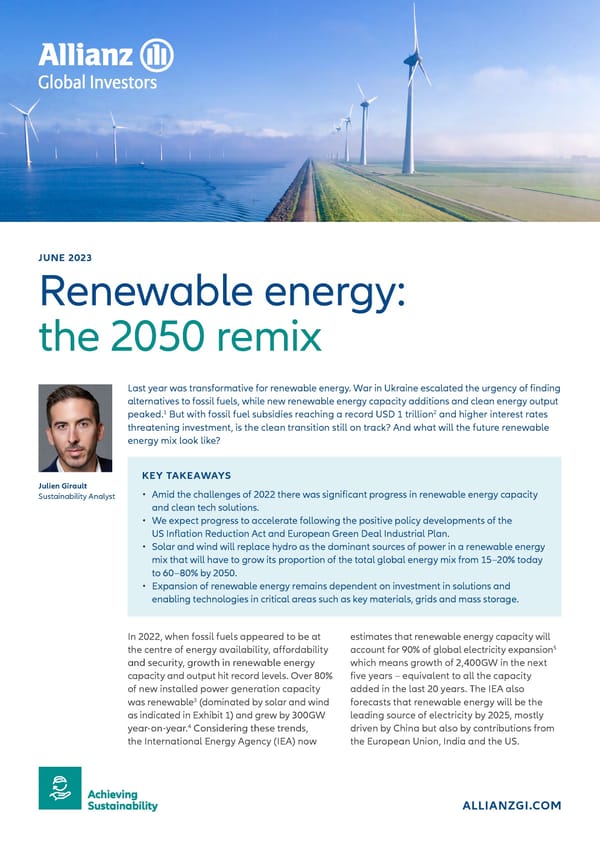Renewable energy
June 2023
JUNE 2023 Renewable energy: the 2050 remix Last year was transformative for renewable energy. War in Ukraine escalated the urgency of 昀椀nding alternatives to fossil fuels, while new renewable energy capacity additions and clean energy output 1 2 peaked. But with fossil fuel subsidies reaching a record USD 1 trillion and higher interest rates threatening investment, is the clean transition still on track? And what will the future renewable energy mix look like? KEY TAKEAWAYS Julien Girault Sustainability Analyst • Amid the challenges of 2022 there was signi昀椀cant progress in renewable energy capacity and clean tech solutions. • We expect progress to accelerate following the positive policy developments of the US In昀氀ation Reduction Act and European Green Deal Industrial Plan. • Solar and wind will replace hydro as the dominant sources of power in a renewable energy mix that will have to grow its proportion of the total global energy mix from 15–20% today to 60–80% by 2050. • Expansion of renewable energy remains dependent on investment in solutions and enabling technologies in critical areas such as key materials, grids and mass storage. In 2022, when fossil fuels appeared to be at estimates that renewable energy capacity will 5 the centre of energy availability, a昀昀ordability account for 90% of global electricity expansion and security, growth in renewable energy which means growth of 2,400GW in the next capacity and output hit record levels. Over 80% 昀椀ve years – equivalent to all the capacity of new installed power generation capacity added in the last 20 years. The IEA also was renewable3 (dominated by solar and wind forecasts that renewable energy will be the as indicated in Exhibit 1) and grew by 300GW leading source of electricity by 2025, mostly year-on-year.4 Considering these trends, driven by China but also by contributions from the International Energy Agency (IEA) now the European Union, India and the US. ALLIANZGI.COM
 Renewable energy Page 2
Renewable energy Page 2